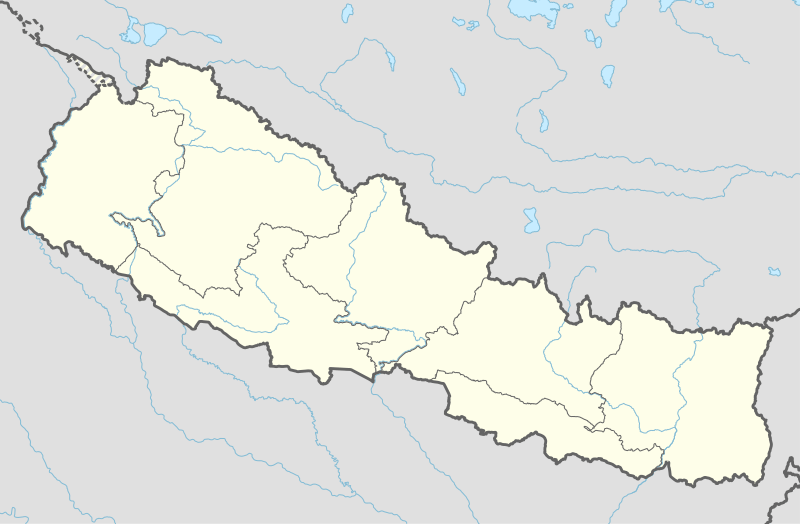Mahendra Cave
Mahendra Cave is a cave located in Pokhara-16,batulechaur, Kaski district, close to the Kali khola,[1] is the large limestone cave. It is a rare example of a cave system in Nepal containing stalagmites and stalactites.[2] The cave attracts thousands of tourists every year.[3] A statue of Hindu lord Shiva can be found inside the cave.
| Mahendra Cave | |
|---|---|
| Mahendra Gupha | |
Entrance of Mahendra Cave | |
 | |
| Location | Pokhara, Nepal |
| Coordinates | 28°16′17″N 83°58′47″E |
| Length | 200m |
| Geology | Pleistocene limestone |
| Entrances | 1 |
| Access | Tours are available in season |
| Website | www |
History
The cave gets its name from former King, Mahendra Bir Bikram Shah Dev. This cave was discovered in the late 1950s by young shepherds of Pokhara. Since then it has remained one of the most visited places in Pokhara. It was first properly surveyed in 1976 by a small team of spelaeologists from the UK including Jane Wilson-Howarth who documented the animals that lived in the dark zone of the cave.[4] Copies of the expedition report are lodged with the UK copyright libraries and at the Royal Geographical Society.
Location
Mahendra Cave is located in the city of Pokhara in the western region of Nepal. It is about 1100 metres above sea level. It has formed in young (Pleistocene) limestone which is overlaid by conglomerates. The cave can be accessed by visitors from the Pokhara Airport within 30 minutes by taxi, one hour by public buses and two hours by foot. From the Prithvi Buspark, it is ten minutes shorter than from the airport via public vehicles.
Adventure
The cave corridors are completely dark with continuously dripping water overhead. The cave is formed in limestone, which falls to the ground and continuously forms electrical sparks. Due to the darkness, artificial lighting is provided inside approximately half of the accessible cave.[5] The cave consists of about 100m of easily accessible passages and a further 100m of low unstable corridors entered by way of a collapsed passage only perhaps half a metre high. A survey of the entire cave and lists of the bats and invertebrates living inside are found in the report of the 1976 British cave expedition to the region.
Sightseeing near Mahendra cave
The place where Mahendra cave lies is full of greenery. The grazing horses and mules can frequently be observed in this area. This place lies in the bottom of a hill covered with greenery. Many surrounding hills full of greenery can be observed from here. Another great cave called Bat Cave can also be visited by travelling in the trail path just beneath the hills within ten minutes by foot.[6]
References
- Swift, Dusty (2011). Illusions of Enlightenment: A Story about a Peace Corps Volunteer in Nepal and His Discovery of the Buddhist Teachings. iUniverse. p. 359. ISBN 9781450290654.
- Naresh Chandra Sangal, Prakash Sangal (1998). Glimpses of Nepal: A Brief Compilation of History, Culture, Language, Tradition, Religious Places, Festivals, Mountains, Revers, Safari Parks, Cities, Kathmandu University, and Other Important Informations for Holiday-makers. APH Publishing. p. 42. ISBN 9788170249627.
- "Nepal to boost post-conflict tourism this year". Daily News Online. 6 January 2007. Retrieved 5 November 2013.
- "Invertebrates of Nepali caves" (PDF). Archived from the original (PDF) on 2017-09-25. Retrieved 2017-09-25.
- "Mahendra cave Adventure".
- "Mahendra cave sightseeing". Archived from the original on 2014-09-29. Retrieved 2014-10-20.
External links
